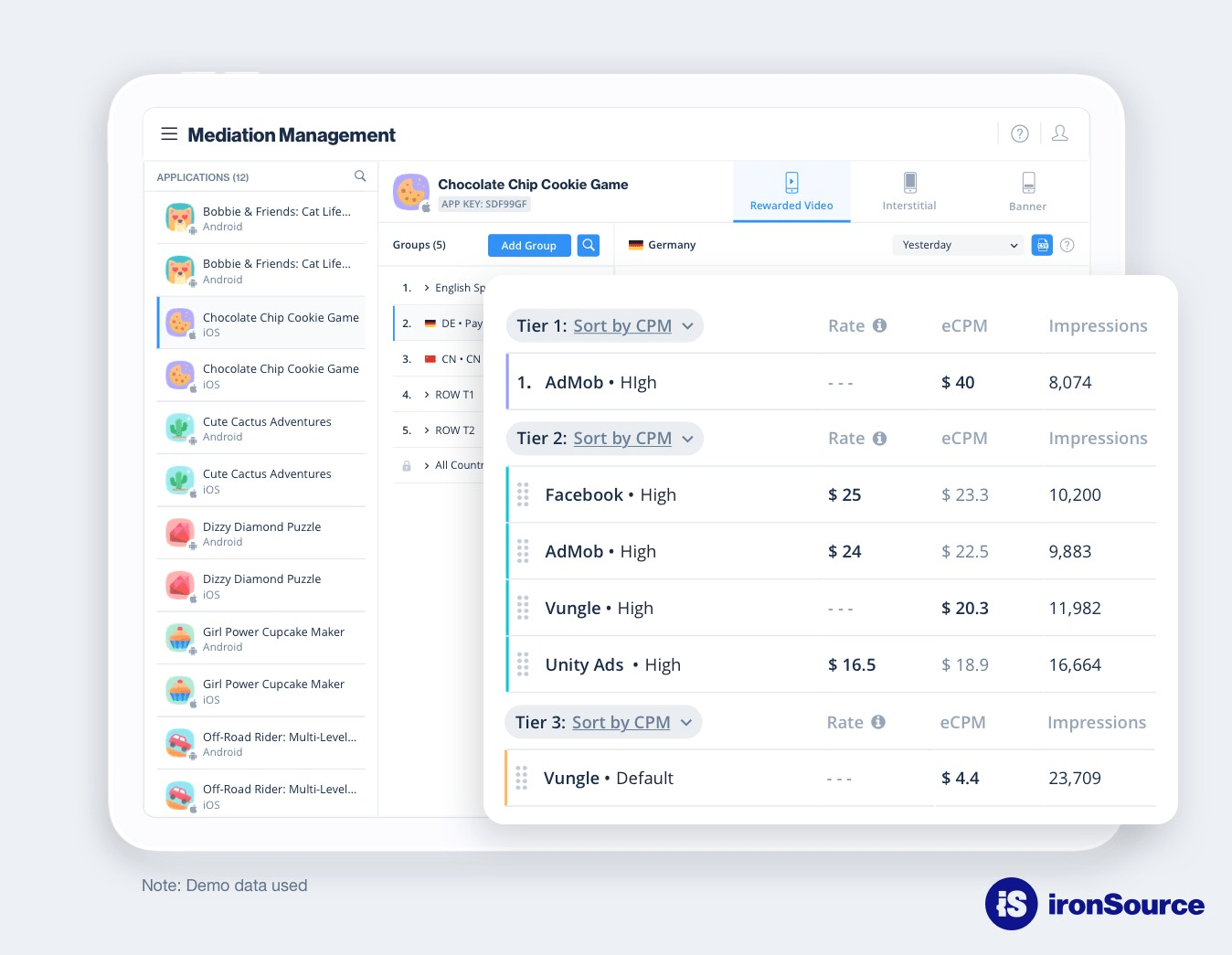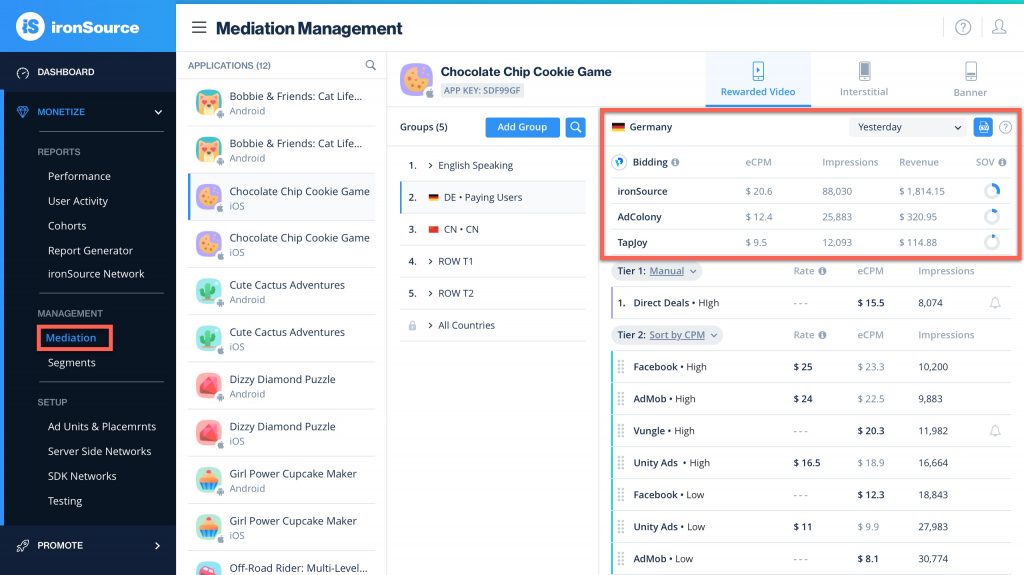What is an ad waterfall?
To earn more revenue, developers use a mediation platform to aggregate and monetize with multiple ad networks. But how exactly does the mediation platform choose which ad network gets to fill the open ad slot? The waterfall is designed to answer that.
Ad waterfalls are a system that enables developers to manage the ad networks they monetize with - by listing and organizing their instances from highest to lowest eCPM. Once the developer sends an ad request to their mediation platform, that request cascades down the ad waterfall - asking one ad network instance, or waterfall instance, at a time whether it’s willing to fill the ad request.
How does an advertising waterfall work?
The mediation automatically places waterfall instances with the highest eCPM at the top of the waterfall. Developers also have the option to override eCPM and give their instances manual rates - this way, they can prioritize high-potential instances that are less likely to get an ad request.
The ad network instance at the top of the waterfall gets the first opportunity to fill the ad slot for that eCPM - if they reject it, the opportunity passes down to the next instance in the waterfall - ensuring the highest price will always be granted.
If the network chooses not to fill that ad slot for the requested instance, the waterfall moves to the next instance in line. The waterfall continues to trickle down, and once an ad has been shown, the process starts over with a new ad request.

The difference between waterfalling and header bidding
The biggest difference between waterfall instances and bidding instances is that bidding instances are automated in real-time, whereas waterfall instances have pre-set price points - with much less flexibility.
Waterfall instances ask one ad network at a time to manually fill an ad slot, tricking down to the next highest bidder until one fills an ad request. However, the gaps in between each bidder may lead to missed revenue opportunities - perhaps a different ad network would have filled the ad slot for a higher price.
Bidding instances, or in-app bidding, on the other hand, are not tied to any specific price point - it asks all the ad networks to name a bid price at the same time in a transparent auction. This way, every bidder gets the chance to offer a bid on every ad request in real time.

Waterfall model advantages and disadvantages
Waterfall instance advantages:
- Using waterfall instances enlarges the portfolio of ad networks you can work with - accommodating to ad networks that aren’t using bidders
Waterfall instance disadvantages:
- Developers prioritize their waterfalls by eCPM, but miss out on potential revenue from ad networks that would have bid higher
- To minimize price fluctuations on their waterfall, many developers manually optimize them, which can be demanding and time consuming
- Waterfalls can have latency issues - it can take a few moments for each ad to show up in the waterfall
